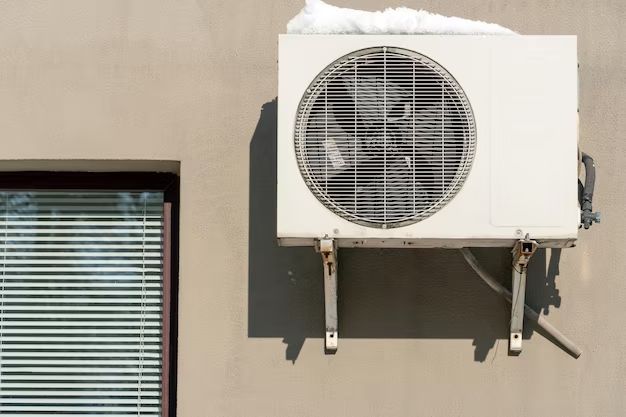Installing an air conditioner in a sliding window is possible, but it takes some extra planning and effort to ensure it is securely installed and sealed. With the right materials and process, a sliding window AC unit can be a great cooling solution for rooms with these type of windows.
Page Contents
What to Consider Before Installing a Sliding Window AC Unit
There are a few important factors to consider before installing an AC in a sliding window:
- Window weight capacity – Make sure the window can support the weight of the AC unit. Window AC units usually weigh between 50-100 lbs.
- Window opening size – The AC needs to fit snugly in the window opening for proper insulation. Measure to make sure the window opening is big enough.
- Window operation – The window should still be able to slide open at least partially with the AC unit installed.
- Electrical setup – There needs to be an electrical outlet nearby to plug in the AC unit.
- Exterior protection – Consider weatherproofing the exterior part of the AC unit from outdoor elements.
- Sealing the unit – Properly sealing the unit is crucial for efficiency, cooling, and preventing water damage.
How to Install a Sliding Window AC Unit
Here is a step-by-step process for how to safely and effectively install an AC unit in a sliding window:
- Measure the window opening to ensure the AC unit will fit properly. The unit should fit snugly from side to side with less than 1 inch of space on each side.
- Place the AC unit on the bottom window track and slide it into place to test the fit. Make sure the unit does not hang over the edge of the track on either side.
- Mark where the side curtains of the AC unit line up with the window frame. This indicates where screws need to be installed to hold the unit in place later.
- Remove the AC unit and use a drill to pre-drill holes for screws at the marks. Make the holes slightly smaller than the screws to allow them to grip the frame.
- Place weatherstripping tape around the window opening. This helps seal gaps between the AC unit and window for better efficiency.
- Slide the AC back into the window opening. Have someone hold it in place while you insert screws in the pre-drilled holes to secure the unit.
- Check that the unit is centered and secure. Close the window onto the top rail of the AC to further secure it.
- Caulk around the exterior side of the unit where it meets the window frame. This seals it from outdoor air and moisture.
- Plug in and turn on the AC unit to test it out.
- If desired, construct a frame around the exterior portion of the unit to protect it from weather damage.
Materials Needed
Here are the basic materials needed for installing a sliding window AC unit:
- Window AC unit
- Measuring tape
- Screws
- Drill
- Weatherstripping tape
- Caulk and caulking gun
- Lumber or trim for exterior protective frame (optional)
Installing Side Panels for Sliding Window AC Units
For added stability and insulation, side panels can be constructed around the AC unit. Here is how to install them:
- Measure the height and width of the window opening and AC unit.
- Construct side panels to these dimensions out of plywood, plexiglass, or another rigid material.
- Cut panels so they slide snugly around the AC unit on both sides.
- Drill holes and insert screws through the panels into the window frame to hold them in place.
- Caulk around the panels where they meet the window frame and AC unit.
- Weatherstrip the panels to seal gaps if needed.
Ideally the panels should have insulation for better efficiency. They prevent air gaps around the AC unit while still allowing the window to slide.
Alternatives to Installing a Sliding Window AC Unit
If installing an AC unit in a sliding window does not work for your situation, here are some alternatives to consider:
Casement Window AC Units
Casement style AC units are made to install in windows that crank open rather than slide horizontally. The units are mounted in the side of the window similarly to a normal window AC.
Portable Air Conditioners
Portable ACs sit on the floor and use a venting kit with a window bracket to send hot air outside. This avoids having to install the AC directly in the window.
Ductless Mini Split Units
Mini split AC systems have an outdoor compressor that connects to an indoor unit mounted on the wall. No window installation is needed, making them ideal for sliding windows.
Window Fans
Window fans provide less cooling than ACs, but can be installed in sliding windows using adjustable panels to fit the opening.
Tips for Using a Sliding Window AC Unit
Here are some useful tips for getting the most out of a sliding window AC unit:
- Make sure the side curtains are extended to their full width for proper insulation.
- Angle the louvers on the unit to direct air for the most cooling comfort.
- Use weatherstripping and caulk to maintain seals around the unit.
- Keep debris cleared from the outside exhaust to promote proper airflow.
- Use blackout curtains on hot sunny days to keep heat out.
- Minimize opening the window to preserve the cool air inside.
- Remove and properly store the unit during winter months.
Conclusion
Installing an AC unit in a sliding window is definitely possible with careful planning, the right materials, and proper installation technique. Side panels can help improve the stability and efficiency. Or consider alternative cooling options if modifying the window opening is not possible. With the right approach, a sliding window AC can be an effective way to add cooling to a room that needs it.
